Bart Howard wrote “Fly Me to the Moon” in 1954. A decade later, Frank Sinatra made the song eternal. It took some years until the space travel metaphor of love euphoria transformed into a real victory of civilization.
Neil Armstrong became the first human to step on the Moon‘s surface in 1969, during the Apollo 11 mission. But after Gene Cernan finished his 3-hour Moon walk in 1972 (Apollo 17), people have not returned to the Earth’s satellite.
The 21st century has seen a new dawn of space exploration. Enabled by billionaires such as Richard Branson, Elon Musk, and Jeff Bezos, the space travel timeline continues in an era of space tourism.
Seeing Paris, crossing the Chinese Wall, space travel… Is this what your bucket list looks like?
In other words (to quote Sinatra), even civilians can now become astronauts. Suborbital flights, visits to the International Space Station, spaceflight from the Earth to the Moon, or even permanent relocation to Mars, have made it to the bucket lists previously filled with ‘seeing Paris’ or ‘walking on the Chinese Wall’.
But making it into space travel history comes at an astronomical price (pun intended). Who can afford to play among the stars and see what spring is like on Jupiter and Mars? Is Space just the newest playground for the rich? “Fly Me to the Moon” lyrics in billionaires’ real life?
The interest of the general public is still kept higher than their pay grade, with promotional stunts that promise – a free ticket to space.
Money is not the only currency to cash out for the unique experience of leaving Earth, anyway. There are much more valuable resources to lose during the adventure. Any wannabe astronaut should consider the ultimate price to pay for the trip: Is space travel worth risking life?
Technology has advanced immensely in recent years. Check out what artificial intelligence has to say about travel trends for humans!
Signing up for risking life
I decided to apply for one of those civilian space missions. Unlike the astronauts of the yesteryears, I didn’t have to be a pilot or have any special degree to be eligible. So I gave it a go.
After pre-registration, I was invited to an initial screening. I had to provide basic personal data, a few images, and answer a couple of questions illustrating my passions and visions on how the space adventure would change it all.
They also asked about the number of social media friends and followers. I guess one needs to leverage a free trip to space with some monetizable influencer statistics.
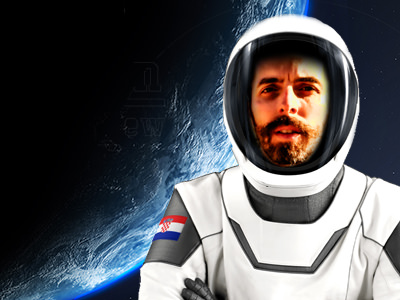
Even if I didn’t get to the interview and the medical check-up phase, the terms and conditions of the selection process were clear from the start. They reminded me at least twice about the seriousness of what I was signing up for.
I had to confirm that I fully understand and acknowledge that “participation in the space flight and its preparatory activities are inherently dangerous and involves risks to life and health“, and that I take full responsibility for it.
I don’t even know how to fly a plane, but sure, why not take the full responsibility for riding the rocket to space, and returning it safely back to Earth?
Transferring the insurance for life-risking space journeys to the passenger’s account is quite logical. Commercial space flight operators are aware that human life is both expendable and priceless.
You can get to galaxies far, far away, without leaving Earth's orbit. Meet Star Wars hotels!
Elon Musk: Space travel pioneers volunteer for probable death
On April 22nd, 2021 (Earth Day), Elon Musk sat to talk to Peter Diamandis about humanity’s future, and the importance of becoming a multi-planetary species.
The live stream of the chat sees the barefoot Musk laughing off the idea that flying to Mars would be an “escape hatch for rich people”. The argument? Well, the trip is dangerous.
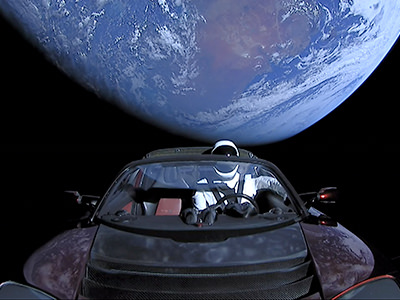
He compared going to Mars to an early-20th-century expedition to the Antarctic, recalling the advert that the explorer Sir Ernest Shackleton supposedly placed in The Times.
Even if it was debunked as an urban myth, the story went that the content of the ad said: “Men wanted for hazardous journey, small wages, bitter cold, long months of complete darkness, constant danger, safe return doubtful, honor and recognition in case of success.”
The legend says that 5.000 men responded to the call.
Back to Elon Musk’s space flight to Mars.
“It’s dangerous, it’s uncomfortable, it’s a long journey. You might not even come back alive! But it is a glorious adventure, and it will be an amazing experience,” the CEO of SpaceX explained, not forgetting to laugh. “Yeah, honestly, a bunch of people will probably die in the beginning. We don’t make anyone go. Volunteers only!”
If you love space topics, you'll find many new friends with common interests at events like Fantasy Basel!
One small step for man
A million people volunteered to test SpaceX Starship during the first private spaceflight around the Moon. The funder of the dearMoon civilian mission, Japanese billionaire Yusaku Maezawa, would pick only the lucky eight to become his fellow passengers.
It is just one of the space tours that attracted global attention recently. And all of them have one thing in common. The 21st-century flight to space is enabled by the inequalities in world wealth.
Just like the space race between the United States and the Soviet Union fueled the early era of space exploration, the chapter on civilian space travel is enabled by the competition of the richest people on the planet. One small step for man became one small step for businessman.
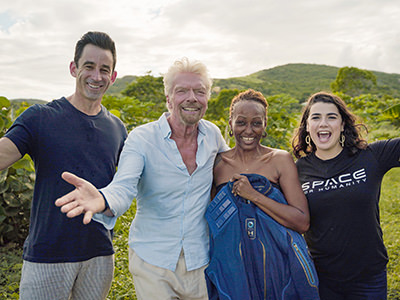
The world’s first space tourist was Dennis Tito. He paid 20 million dollars to spend a week on the International Space Station in 2001. Inspired by Yuri Gagarin’s space travel in 1961, he never regretted paying for “the greatest moment of his life”.
Back then, NASA was not interested in transporting private persons to space. They were all turning to Space Adventures, the American space travel agency arranging a trip to ISS on the Russian Soyuz spacecraft.
The price the first space tourists had to pay grew over time. For instance, video game developer Richard Garriot paid 30 million in 2008, and Cirque du Soleil founder Guy Laliberte cashed out 35 million USD in 2009.
But the rich also took things into their hands. The billionaires’ race to space was never as apparent as in July 2021. Amazon founder Jeff Bezos flew on Blue Origin’s New Shepard rocket on July 20. Richard Branson beat him by experiencing minutes of weightlessness on the Virgin Galactic space flight with Unity spacecraft just nine days earlier.
Is space exploration a waste of money?
“I want to thank every Amazon employee and every Amazon customer because you guys paid for all this”, Bezos said after his 11-minute ride.
It seems the richest people in the world never felt the crisis of the coronavirus pandemic. On the contrary, Bezos’ wealth grew by 86 million dollars!
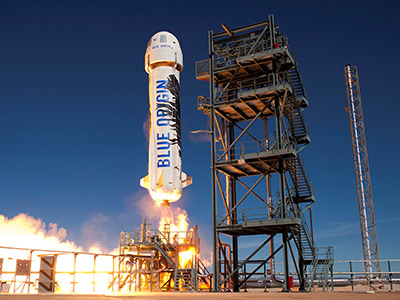
Along with enthusiasts, critics of the billionaires’ newest hobby also grow. Some are sharp in claiming that space exploration is a waste of money.
In October, David Beasley, the head of the UN’s World Food Program, stung Elon Musk with a Twitter congratulation for earning 36 billion dollars in a single day. “1/6 of your one-day increase would save 42 million lives that are knocking on famine’s door”, said the director of the food agency.
While no man alone could solve world hunger, discussions on taxing the rich become louder. In the times of global flight suspensions during the pandemic, their rockets are tearing the sky, in a historical show-off of power.
On the other side, the pandemic, as well as the unavoidable climate change, also teaches us how vulnerable we are as a species. Is becoming a multi-planetary civilization the only scenario that can save our future? And how do a high carbon footprint of the rockets and space travel environmental impact fit into that equation?
The original question of this article was whether space travel is worth risking life. When we turn around ourselves, it’s not possible to ignore that our lives are already at risk.
Time on Earth is precious
“I’ve spent my entire career working to extend people’s lives. However, with limited materials and energy on Earth, extending our reach into space can help humanity continue to thrive.”
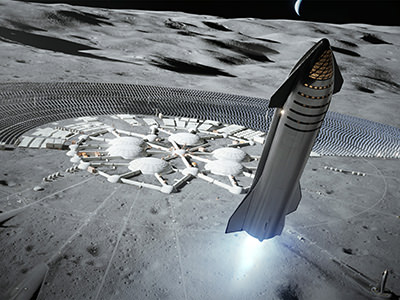
These were the words of Glen de Vries, the developer of medical science software, before he embarked on a Blue Origin suborbital flight on October 13, 2021. He flew together with William Shatner, the famous Captain Kirk of Star Trek’s Enterprise.
Just a month after his flight to space, de Vries died in a plane crash. He was flying a small Cessna aircraft, and even if he was a certified pilot, his life ended in tragedy.
More than a conclusion that one is risking life by living it, de Vries left us with some prophetic, and hopefully educational words after his flight on Jeff Bezos’ rocket.
“I had that heightened sense of time in my mind starting from the countdown”, Glen said. “I think I’ve taken that perspective back down with me to our planet, and into my relationships. The passage of time, just like the resources on Earth, feels more precious with an expanded perspective.”
Making space for space travel
In my youth, I was a sleepwalker. In Croatia, we call that phenomenon mjesečarenje, literally a Moonwalk. And no, it has nothing to do with Michael Jackson.
The Moon’s power of attraction is both mythological and real. Through the tides, it makes life possible. We measure time by its cycles. Besides the months, we also call the first day of the week after the Moon.
The fascination with our closest celestial neighbor is understandable. Conquering it in the 1960s was just the first step in our space journeys. Human curiosity for what lies beyond our horizons marches on.
Space travel provokes similar wonder as climbing mountains. Why are humans risking life to enlarge the horizon?
My application for a space travel adventure was a response to an inner urge. “To boldly go where no man has gone before” is, for me, a precise definition of what being human is.
After I revealed my astronaut (or touristronaut) aspirations to some colleagues, their gaze turned blank. A big question mark was almost tangible in the air. Why would anyone be willing to risk his life in order to fly to space?
Human progress relies on taking risks, and yet it stops most of us from acting. Rationally, it seems unnecessary for survival. It’s even intuitive. The one who doesn’t risk life, is the one who keeps it, right?
Similarly, people often wonder about what pushes alpinists to climb mountains. Why are they willing to endanger their lives just so they could claim the summit? Their achievement seems to be provoking survival.
Space travel is not just another tourist trend for the rich and the eccentric. The question of risk here could be well connected with the probability of survival. In the long term, in a civilization that grows and consumes its resources at an unsustainable speed, we all might need more – space.
Space travel tourism future
The future of space tourism is around the corner. Whether you want to experience the view of Earth from the Moon, see the other side of the Moon, travel to other planets, or just travel through space, commercial space travel companies are eager to transform your dollars into an unforgettable space vacation.
Space flights for civilians are the reality of today, and anyone with large enough pockets can write their name on a space travelers list.
This is the predictable space travel timeline for the upcoming years. Which of the space travel opportunities would you consider taking?
2022
Suborbital flights
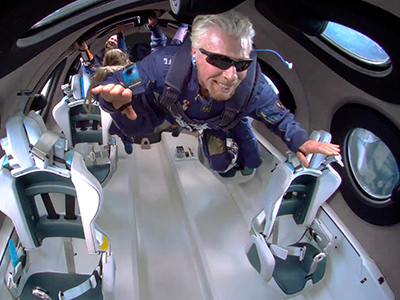
The cheapest way to visit space as a civilian is by joining suborbital flights operated by Virgin Galactic and Blue Origin.
There are hundreds of space flights planned in a year timeframe, and a ticket for a few minutes of microgravity costs 250 thousand USD.
Update: Due to supply chain, staffing problems, and refurbishment, Virgin Galactic has halted suborbital flights until mid-2024. Tickets now cost 450 thousand USD.
After an engine failure in September 2022, followed by a 15-month hiatus, Blue Origin resumed flights in December 2023. They plan to return to human missions “soon”.
Visiting the International Space Station
Ax-1 is a collaboration project between SpaceX and Axiom Space, as the first all-private astronaut mission to the International Space Station. The space tourists heading to ISS in 2022 with Dragon 2 are paying 55 million dollars for their nine-day retreat each. The plan is to organize ISS trips every six months.
Update: After the first Axiom Mission in April 2022, there was another one in May 2023, and AX-3 in January 2024.
2023
The trip around the Moon
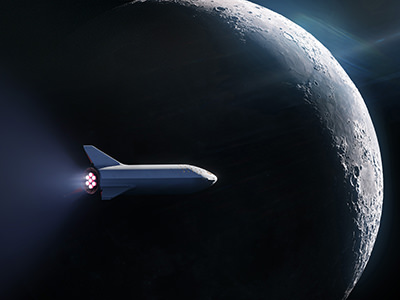
After his stay at the ISS in December 2021, Yusaku Maezawa continues his space odyssey with #dearMoon mission. He invited eight strangers to join him on a round trip to the Moon.
There would be no touching the lunar surface. The team would board the Starship spacecraft for this circumlunar trip, and the entire Moon travel cost will be paid by the billionaire.
Update: DearMoon project has been delayed until the spaceship completes development.
Spacewalk
Space Adventures resume flying to ISS on the Russian Soyuz spacecraft again. Two private astronauts can join the trip to outer space in 2023, and one can complete a spacewalk. The price for this unique experience is not disclosed.
The same company also plans to circle around the Moon in 2023, with Deep Space Expedition Alpha. One of the two available seats was supposedly sold for 150 million USD.
Update: Since being announced in 2005, the Moon mission has been postponed many times, with no clear timeline at the moment.
2024
First private space station
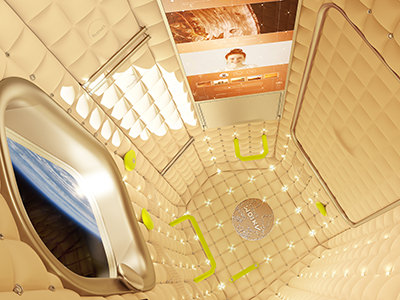
Before ISS retires in 2031 and crashes back to Earth, Axiom Space plans to continue adding modules to its Axiom Segment, and eventually transform it into the world’s first commercial space station.
Modules linked to the ISS would be able to welcome 16 people who would have egg-like cabins with large windows offering fantastic views of Earth.
In the following years, more space stations could populate the low Earth’s orbit. Orbital Reef by Blue Origin and Sierra Space, Starlab Space Station by Nanoracks, and the luxury orbital module by Russian Roscosmos are just some of the announced replacements for the ISS.
The balloon ride to space
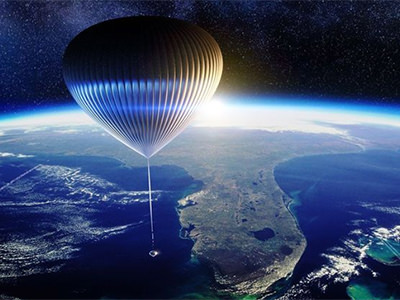
The Spaceship Neptune by Space Perspective promises to take you to space on a balloon-based system.
The trip in a capsule dangling from a high-altitude balloon would last six hours. The space travel tickets in this arrangement cost 125 thousand USD.
2027
First space hotel
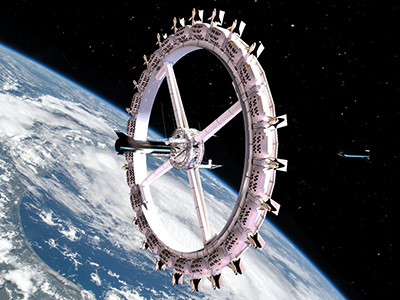
The Orbital Assembly Corporation has the world’s first luxury space hotel as its flagship project. The futuristic Voyager Station would be based on a gravity ring, the first artificial gravity platform.
The rotating wheel hotel plans to accommodate 280 guests and 112 crew members. The price of the 3.5-day stay is 5 million USD.
2117
Space travel to Mars

The ultimate space travel highlight in a hundred years could be the colonization of Mars. Moving to the Red Planet is just the last step of many preparatory space journeys.
The first manned mission to Mars is expected in the 2030s.
NASA has already started testing the Mars Dune Alpha, the habitat designed as our first living quarters on another planet.
Dubai announced the building of an entire Martian simulation city in 2022-2024. Mars Science City is a part of the Mars 2117 initiative that wants to colonize the new planet in the next century.
Did you like this article on space travel tourism?
Pin it for later!
This post was originally published on December 3rd, 2021, and was updated on February 5th, 2024.
Disclosure: This post may contain affiliate links, which means if you click on them and make a purchase, Pipeaway might make a small commission, at no additional cost to you. Thank you for supporting our work! The cover image of this article was purchased through Depositphotos, my go-to platform for high-quality licensed stock images. They have great photo deals, so check them out! The other pin image has been AI generated by Dall-e.

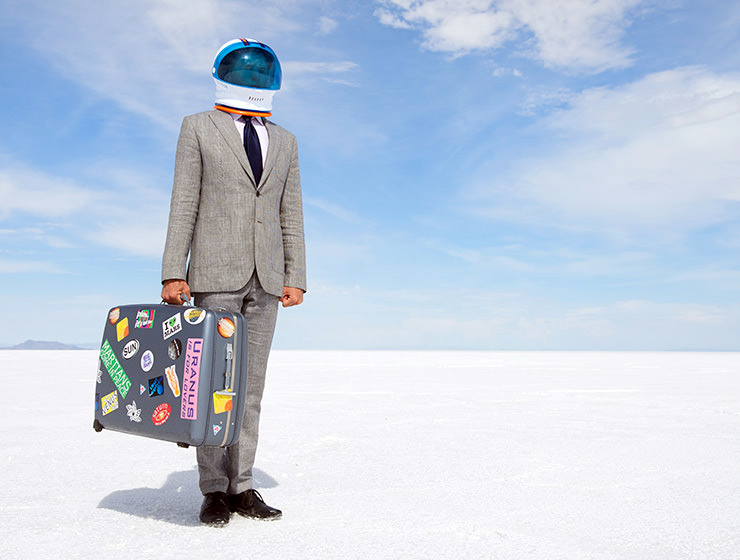
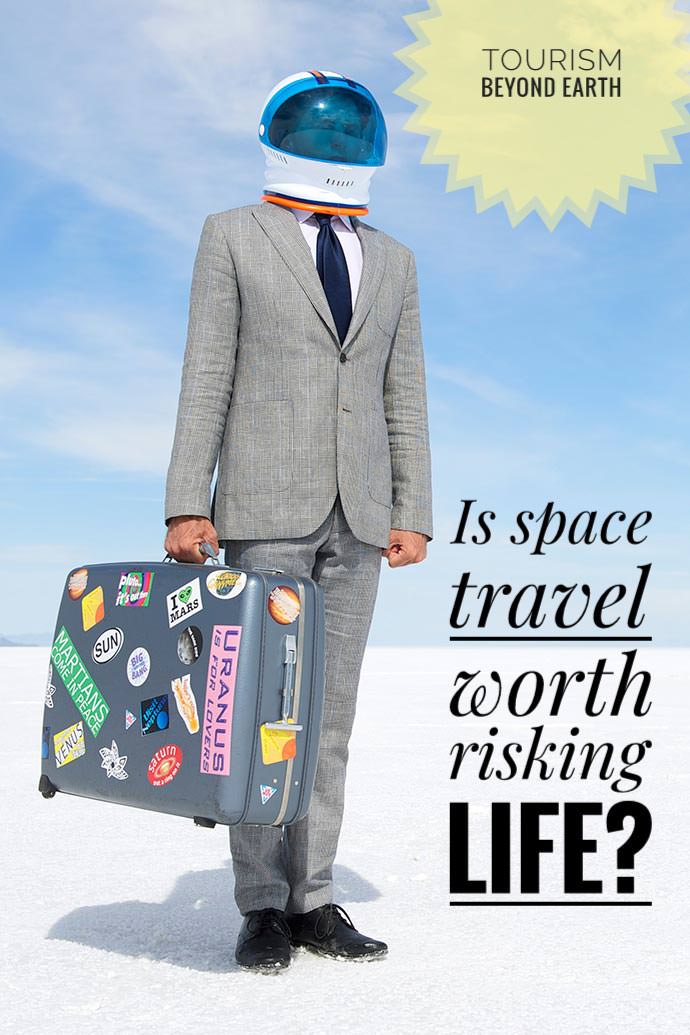
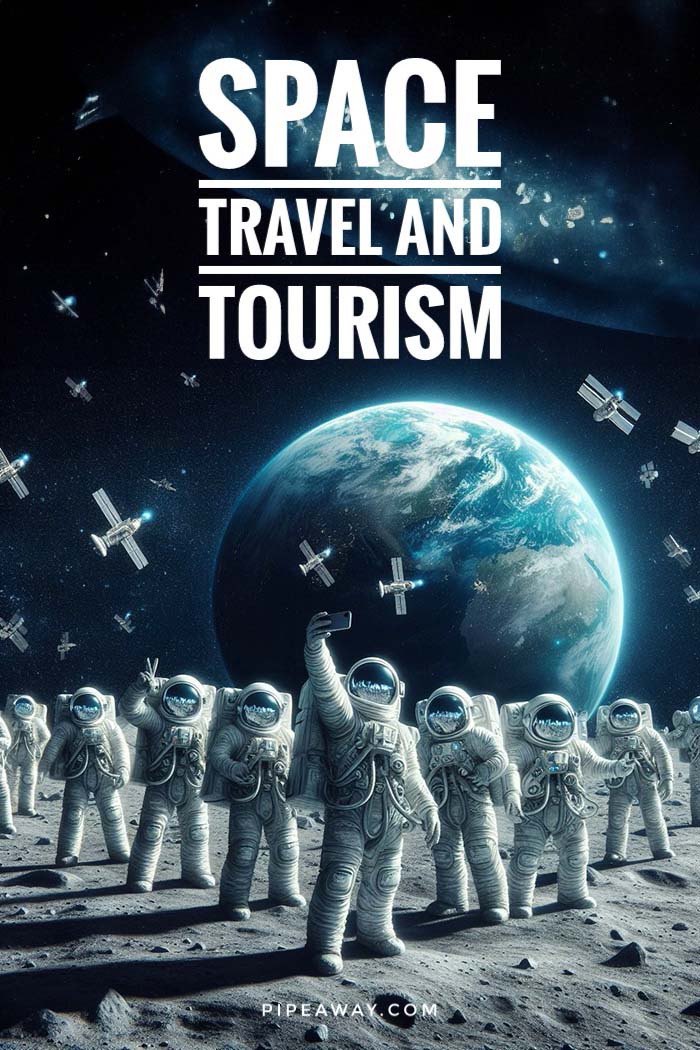

Great overview, I assume that in the few years (or decades) those travels will be safer. Similar as traveling by any means of transport. You never know how your travel will end and what could happen.
Though for this day of course there are many people who would risk their lives for such a unique opportunity.
Thanks for sharing your thoughts, Alma!
I guess that the pricier the vehicle, the better the safety.
Even if Elon Musk says that a bunch of space travelers will die at first, I think he also hopes they won’t, as it would be bad for business.
That’s the whole point behind the reusable rockets. Nobody likes to break a toy, and businessmen like it when they can squeeze the last penny out of their investment.
I enjoyed this article! It’s not quite space travel, but there are a couple of companies that currently do “gravity-free flights” that allow passengers to experience weightlessness. One in the US charges $7500 for a 5-hour flight.
Thanks for the input, Darla!
Indeed, it is possible to experience weightlessness without going to space.
Those Zero-G experiences rely on a plane flying in parabolic arcs and supposedly enable 30 seconds of weightlessness during each flight maneuver.
While not strictly a space trip, it is surely an amazing experience.
I am always available to review it in person if the company is interested 😉